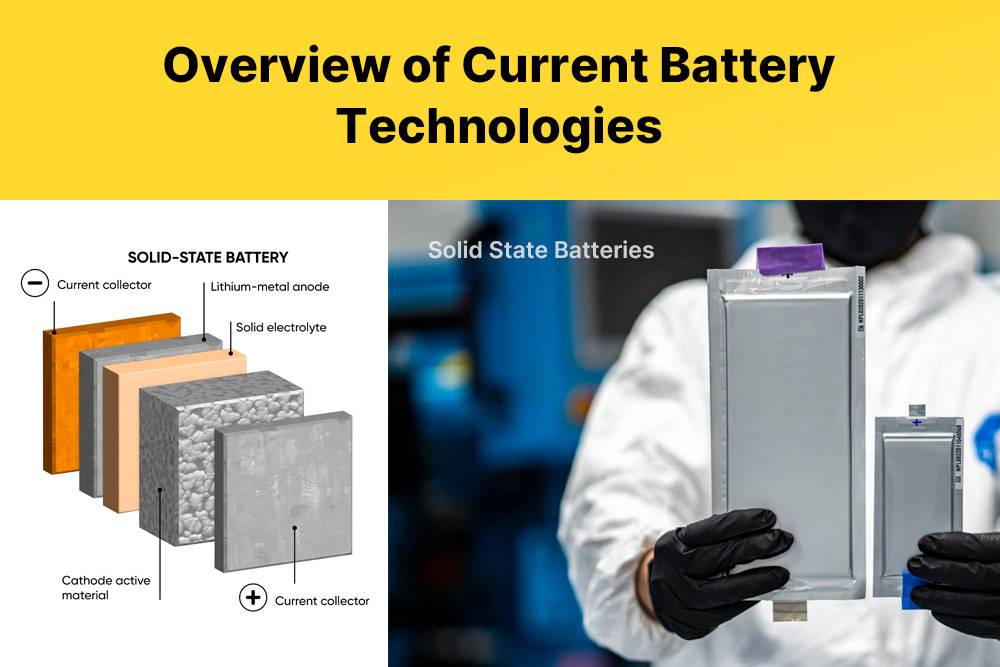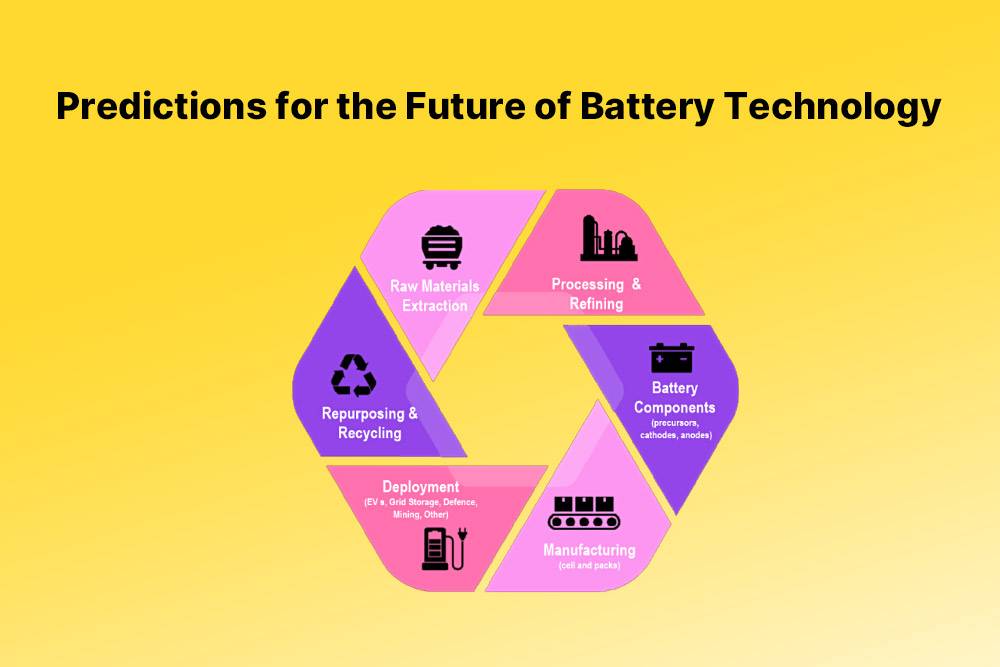Embark on a journey into the future of battery technology, where innovations promise to reshape industries. From smartphones to renewable energy, explore the advancements set to make waves in 2023 and beyond. Join the exploration of cutting-edge developments, ensuring you’re prepared for the next era of energy innovation. Fasten your seatbelts and get ready to witness the electrifying evolution of essential power sources!
The Importance of Battery Technology
Battery technology is the driving force shaping our modern world. From portable electronics to renewable energy storage and electric vehicles, its impact is transformative.
1. Mobile Connectivity and Productivity:
- In our interconnected society, battery life is crucial for smartphones and remote work.
- Dependable batteries keep us productive on-the-go, enabling seamless connectivity.
2. Environmental Impact and Clean Energy:
- Batteries play a pivotal role in reducing carbon emissions and combating climate change.
- They facilitate effective energy storage for balancing supply and demand in clean energy systems.
3. Green Transportation and Healthcare:
- Battery-powered electric vehicles contribute to a greener transportation future, reducing greenhouse gas emissions.
- In healthcare, reliable batteries are vital for uninterrupted power supply during critical procedures.
The significance of battery technology extends beyond personal convenience, impacting environmental initiatives and various industries. Ongoing advancements promise even more efficient batteries, fostering sustainability and technological progress.
Overview of Current Battery Technologies
Current battery technologies are the backbone of our daily lives, energizing devices from smartphones to electric vehicles. Let’s delve into the main types shaping our present and future.

1. Lithium-Ion Batteries:
- Most widely used and versatile, ideal for portable electronics and electric cars.
- Offers high energy density but faces limitations like flammability and capacity degradation.
2. Nickel-Metal Hydride (NiMH) Batteries:
- Common in hybrid vehicles and some electronic devices.
- Boasts higher energy density than older technologies but is susceptible to memory effect.
3. Lead-Acid Batteries:
- Found in traditional internal combustion engine vehicles.
- Low-cost but exhibits lower energy density and shorter lifespan compared to alternatives.
4. Solid-State Batteries:
- An emerging technology utilizing solid electrolytes for enhanced safety, longer lifespan, and faster charging.
- Holds potential for higher energy densities, addressing current limitations in lithium-ion cells.
5. Other Technologies:
- Zinc-air and sodium-ion batteries are being researched for renewable energy storage applications.
While current battery technologies serve us well, ongoing research aims to overcome limitations and bring forth safer, more efficient, and sustainable power sources. The future promises exciting developments that will impact industries, from transportation to renewable energy storage.
Introduction to Solid-State Batteries
Solid-state batteries represent a revolutionary leap in battery technology, offering enhanced safety, energy density, and potential for faster charging. Let’s explore their promising advantages and acknowledge the challenges they currently face.

1. Safety Advantages:
- Solid-state batteries eliminate flammable liquids found in traditional batteries, reducing the risk of fires and explosions.
- Ideal for applications like electric vehicles where safety is a critical concern.
2. Increased Energy Density:
- Solid-state batteries store more energy in a smaller size compared to conventional batteries.
- Devices powered by solid-state batteries may have longer runtimes or be more compact and lightweight.
3. Potential for Faster Charging:
- Advances in solid-state battery technology may lead to significantly reduced charging times.
- Addresses a common drawback of extended charging times associated with current lithium-ion batteries.
Challenges and Limitations:
- Despite the promising benefits, challenges like high production costs and manufacturing complexities hinder widespread adoption.
- Scaling up production while maintaining quality standards remains a key challenge for manufacturers.
Future Outlook:
- Continued research and increased investment hold the promise of significant breakthroughs in solid-state battery technology within the next decade.
- The commercialization of reliable and cost-effective solid-state batteries has the potential to transform various industries, powering everything from smartphones to electric cars!
Advantages and Potential Applications of Solid-State Batteries
Solid-state batteries represent a significant advancement in battery technology, offering advantages that can revolutionize various industries. Let’s explore the key benefits and exciting potential applications of these innovative batteries.
1. Enhanced Safety:
- Solid-state batteries eliminate flammable electrolyte solutions, reducing the risk of fire or explosion.
- Ideal for electric vehicles (EVs) where safety is a top priority.
2. Higher Energy Density:
- Solid-state batteries can store more energy in a smaller space, perfect for devices with size constraints.
- Ideal for applications requiring high power output within limited physical dimensions.
3. Faster Charging Capabilities:
- Solid-state batteries can be charged at higher rates without compromising performance or lifespan.
- Enables shorter charging times for EVs and portable electronic devices, enhancing convenience.
4. Longer Lifespan:
- Solid-state batteries exhibit longer lifespans due to minimized degradation over time.
- Allows for more charge-discharge cycles before replacement is needed.
Potential Applications:
- Electric Vehicles (EVs): Increased range, reduced charging times, and improved safety.
- Aerospace: Lightweight and powerful energy storage solutions for aircraft.
- Renewable Energy Storage: Storing renewable energy for grid systems during peak production.
- Wearable Electronics: Miniaturized solid-state batteries for efficient and extended usage in wearables.
- Smartphones: Potential for longer-lasting battery life on a single charge.
As research progresses and manufacturing advances, the potential for solid-state batteries to transform various sectors, providing safer and more efficient energy storage solutions, continues to grow. The applications of this technology are diverse and could reshape how we power our devices in the future!
Challenges and Limitations of Solid-State Batteries
While solid-state batteries show immense promise for the future, they face challenges that need addressing. Let’s delve into the key hurdles and limitations that researchers are working to overcome.

1. Cost Constraints:
- Solid-state batteries are currently more expensive to produce than traditional lithium-ion batteries.
- Researchers are actively seeking ways to reduce manufacturing costs for wider accessibility.
2. Scalability Issues:
- Although promising at small scales, scaling up production for applications like electric vehicles poses challenges.
- Large-scale manufacturing processes need development to ensure effective scalability.
3. Energy Density Improvements:
- While offering higher energy density than conventional lithium-ion batteries, further advancements are required.
- Researchers aim to achieve greater energy storage capabilities to enhance overall performance.
4. Safety Concerns:
- Solid-state batteries are generally considered safer, but concerns exist regarding dendrite formation.
- Dendrites can lead to short-circuits, impacting safety and performance.
5. Temperature Sensitivity:
- Extreme temperatures, both hot and cold, can affect solid-state battery performance.
- Maintaining efficiency and longevity under varied temperature conditions is a challenge.
Addressing the Future: Despite these challenges, researchers worldwide are dedicated to resolving these issues. Ongoing efforts aim to unlock the full potential of solid-state batteries, paving the way for safer, more efficient, and cost-effective energy storage solutions in the future.
CATL new battery with highest energy density in the world
Other Emerging Battery Technologies
Beyond solid-state batteries, numerous emerging technologies are poised to revolutionize energy storage. Let’s explore some promising alternatives to traditional lithium-ion batteries.
1. Lithium-Air Batteries:
- Lithium-air batteries offer higher energy density than current lithium-ion batteries.
- Utilizing oxygen from the air, these batteries are lightweight and efficient, holding potential for various applications.
2. Flow Batteries:
- Unlike traditional batteries, flow batteries store energy in liquid electrolyte solutions.
- Known for flexibility in capacity and rechargeability, they are well-suited for grid-scale energy storage.
3. Graphene-based Supercapacitors:
- Supercapacitors based on graphene charge and discharge rapidly, making them ideal for high-power applications.
- Their efficiency in electric vehicles and renewable energy systems is gaining attention as an alternative to conventional batteries.
4. Bio-inspired Battery Designs:
- Researchers explore bio-inspired designs, such as MIT’s “leaf-inspired” battery.
- These designs mimic natural processes, converting sunlight into chemical fuel for innovative energy storage solutions.
The dynamic field of battery technology continues to evolve, with these emerging technologies offering exciting possibilities. Despite challenges, ongoing research and innovation are expected to drive further breakthroughs, shaping the future of energy storage.
Predictions for the Future of Battery Technology
As technology rapidly advances, the future of battery technology holds exciting prospects. Researchers aim to address growing demands for efficient energy storage solutions, leading to innovations set to transform various industries.

1. Solid-State Batteries (by 2023):
- Solid-state batteries are a forefront advancement, offering improved safety, higher energy density, faster charging, and longer lifespan.
- Anticipated progress by 2023, with companies like Toyota planning to introduce electric vehicles featuring solid-state batteries.
2. Next-Generation Chemistries:
- Ongoing research focuses on enhancing existing battery technologies like lithium-air or lithium-sulfur batteries.
- Potential for these next-gen chemistries to provide even higher energy densities compared to current lithium-ion batteries.
3. Sustainable Alternatives:
- Exploration of alternative materials, such as graphene-based electrodes or sodium-ion chemistry, aims to create more sustainable and environmentally friendly batteries.
- The shift towards cheaper and abundant alternatives could revolutionize the landscape of battery technologies.
The future of battery technology holds promise, with continuous breakthroughs driving innovation. While the dominant technology by 2023 remains uncertain, the trajectory is clear – advancements in powerful, eco-friendly energy storage solutions will shape our future. Get ready for a world where batteries evolve to meet ever-increasing energy demands!
New Insights
Here are the latest news articles discussing the newest battery technology for the years 2023-2024:
- In an article, it discusses the advancements in lithium battery technology, highlighting the key areas of innovation which include cathode materials, anode materials, electrolytes, and separators. The article mentions the distinction between lithium iron phosphate batteries and ternary batteries, each with their own set of advantages. Furthermore, it outlines the development pain points and breakthroughs in the field, such as the lack of high energy density materials for industrial application and safety issues related to lithium-ion batteries. It also points out that structural innovation in battery cells and the advancement of solid-state battery technology are among the breakthroughs in the industry.141
- Another article provides an outlook on photovoltaic technology routes for the year 2024, including TOPCon, perovskite, HJT, and BC batteries. It discusses the potential for N-type silicon material barriers and the acceleration of auxiliary material technology with the rise in N-type TOPCon penetration rates. The article also touches on the rapid evolution of new technologies, with perovskite nearing mass production and HJT and BC batteries steadily advancing.142
- The article from the Chinese Science Daily tells the story of China’s breakthrough in lithium battery technology, culminating in the development of a solid-state battery with an energy density of 360 watt-hours per kilogram, which was delivered to a leading electric vehicle company. This development signifies a significant step forward for China in the new energy vehicle industry and is considered a milestone globally. The article also discusses the research and development of sodium-ion batteries as an alternative to lithium-ion batteries, which could offer advantages in terms of safety and energy density.143
These articles highlight the ongoing innovations and breakthroughs in battery technology, with a focus on improving energy density, safety, and finding alternative materials to lithium for future battery systems.
“The battery industry is at the cusp of significant advancements with the evolution of lithium battery technology, underscored by the strides in cathode and anode materials, as well as electrolyte innovations. The emergence of solid-state batteries and the strategic development of sodium-ion alternatives reflect a proactive industry addressing energy density and safety challenges head-on. As we progress into 2023-2024, these innovations not only promise to reshape the landscape of electric mobility but also highlight the sector’s commitment to sustainable and safer energy solutions.” — Mr. Raza, Lithium Battery Expert from Redway Power




